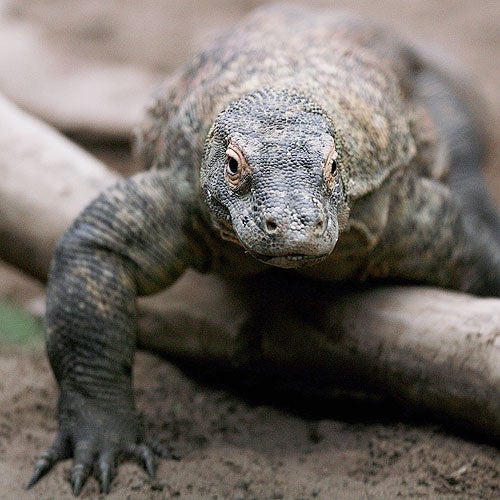Tiny kitten plucked from Komodo dragon enclosure at Texas zoo
No-one knows how the bundle of black and ginger fur ended up inside an exhibit at Forth Worth Zoo

Your support helps us to tell the story
From reproductive rights to climate change to Big Tech, The Independent is on the ground when the story is developing. Whether it's investigating the financials of Elon Musk's pro-Trump PAC or producing our latest documentary, 'The A Word', which shines a light on the American women fighting for reproductive rights, we know how important it is to parse out the facts from the messaging.
At such a critical moment in US history, we need reporters on the ground. Your donation allows us to keep sending journalists to speak to both sides of the story.
The Independent is trusted by Americans across the entire political spectrum. And unlike many other quality news outlets, we choose not to lock Americans out of our reporting and analysis with paywalls. We believe quality journalism should be available to everyone, paid for by those who can afford it.
Your support makes all the difference.A tiny kitten has been plucked from the Komodo dragon enclosure at Fort Worth Zoo, Texas, saving it from a rather grisly fate.
The giant reptiles eat meat and might have welcomed the bundle of quivering fur and giant eyes as a light afternoon snack.
Luckily, a zookeeper spotted the ginger and black kitten and took her to an animal shelter.
No-one knows how she ended up in the zoo’s exhibit although feral populations of cats live in the park around the zoo.
The Humane Society of North Texas is looking after the kitten as it recovers from its ordeal.
She is thought to be about a month old and will be offered for adoption as soon as she is big enough.
“This feisty little girl was luckily, unharmed, she is quite a survivor,” said the shelter on its Facebook page. “Now named Komodo, she is in foster care till she gets big enough for adoption!”

Komodo dragons hunt and ambush prey including invertebrates, birds, and mammals, and often hunt as a pack.
Larger animals - they can grow up to 10ft long and weigh as much as 365 pounds - survive on a diet of deer and have been known to attack humans in their native Indonesia.
They also eat carrion and are able to use their forked tongue to detect wafts of rotting carcases as far as five miles away.
Join our commenting forum
Join thought-provoking conversations, follow other Independent readers and see their replies
Comments